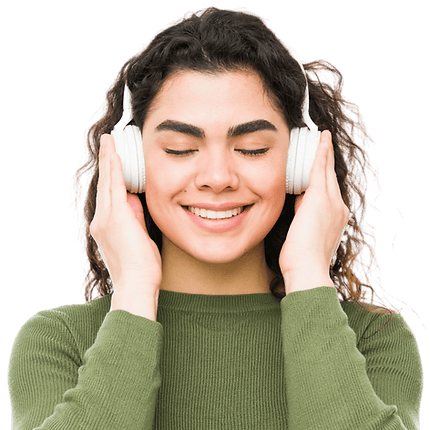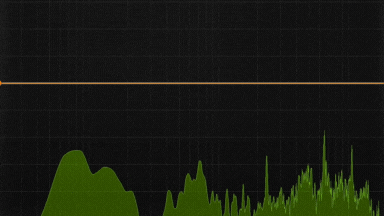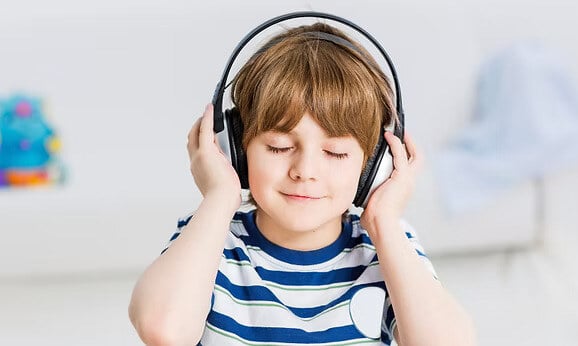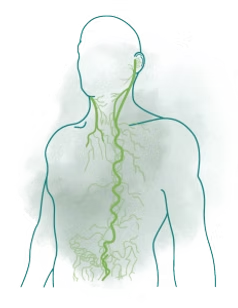The Safe and Sound Protocol
Think, feel, and connect better through nervous system regulation.
Healing or healthcare professional? Learn more below or purchase now.
If you’re not a therapist, clinician, counselor, coach or other healthcare professional, find a provider here.


The Safe and Sound Protocol
Think, feel, and connect better through nervous system regulation.
Five hours of music.
Long-lasting impact.
The Safe and Sound Protocol (SSP) is a powerful listening therapy designed to help regulate the nervous system, so you can better connect with yourself, others and the world around you.
Humans need social connection.
Subconsciously, your nervous system is always looking for cues of safety from other people through things like body language, facial expression or tone of voice.
But if you have a harder time interpreting these cues of safety due to past experiences or the way you take in information, your brain and body can misinterpret these cues, limiting your ability to connect in a meaningful way.
How does the SSP work?
Through the specially filtered music, the SSP sends cues of safety to your nervous system, building the foundation for awareness, embodiment and resilience.

Benefits of nervous system regulation

Improved response to stress
When our nervous system is regulated, it’s easier to sleep, eat, digest, concentrate, communicate, and participate in meaningful relationships with others. We can better respond to difficult situations and move past them instead of reacting and getting “stuck” in them.

Better emotional regulation and resilience
Become attuned to and more in control of emotions, so you can move through temporary setbacks with more flexibility and ease.

More social connection and deeper relationships
By activating the part of your brain that allows us to be more social, affectionate and connected, the SSP can help shift you into a state where you are more comfortable and at ease engaging with others, leading to deeper and more meaningful relationships.
Tunes that retune.
The music of the SSP is unlike any other. Each track has been filtered through a patented algorithm that highlights specific sound frequencies that are similar to the human voice.
Unfiltered Music

This is an example of the full-spectrum sound frequencies in a typical unfiltered clip of popular music.
Specially Filtered SSP Music

Here is the exact same clip — after being filtered through the evidence-based algorithm backed by decades of scientific research.
As you listen to the music of the SSP, these highlighted frequencies send cues of safety to retune your nervous system, which can help you feel more settled, engaged and balanced.
Works alongside you, wherever you are on your healing journey.
Unfiltered Music

The SSP may be helpful in reducing symptoms and supporting overall health and resiliency for people seeking support for:
- Depression and anxiety
- Neurodevelopmental differences, such as autism, hyperactivity and attention
- Learning difficulties Sensory processing differences Trauma history And more
View extensive real world evidence, or clinical research and case studies.
Unfiltered Music

It can also be combined with and is supportive of other therapies, including:
- Occupational therapy, play therapy and sensory integration therapy
- Eye Movement Desensitization and Reprocessing (EMDR), Somatic Experiencing® (SE™), and Internal Family Systems (IFS)
- Cognitive behavioral therapy (CBT) and other forms of talk therapy (e.g. DBT, MCBT, etc.)
Unfiltered Music

You can listen to the music of SSP either in person with your certified provider or remotely from the comfort of your own home, allowing for flexibility and ease. Your provider will collaborate with you on a listening plan that works for you.
Unfiltered Music

The SSP has helped over 100,000 children, adolescents and adults in more than 70 countries worldwide. Uniquely, many families experience the SSP together and in support of one another.
"[After the Safe and Sound Protocol], I feel like I could finally connect with myself, recognize and accept who I actually am, and all of a sudden know what my needs are."
— Client, 30, who presented with hypersensitivity and anxiety
"So much of what people are taught about therapy reinforces that they have to think it out and work it out in their minds. Kids and adults alike over-intellectualize therapy. The SSP is a lovely invitation into your body."
— Licensed Counselor (LMHC) and Registered Nurse (RN)
Continue your learning
It's important for you to stay informed and educated along the listening journey. Watch this short video for an introduction to the SSP, including:
- What a listening session may look like
- What the SSP music sounds like
- How often or how fast you should listen
- What to expect from your SSP provider
- And more
Discover the science behind the Safe and Sound Protocol
The Safe and Sound Protocol (SSP) was designed by Dr. Stephen Porges based on decades of research that is now known as the Polyvagal Theory.
To understand the science behind the SSP, it can help to first understand our own body and the nervous system.

The Autonomic Nervous System
Our involuntary bodily functions, such as breathing, heart rate, and digestion, are regulated by the autonomic nervous system, which has two parts that work together to help us ebb and flow through life: the sympathetic and parasympathetic nervous systems.

Sympathetic Nervous System
You can think of the sympathetic nervous system as a mobilization system that would support our "fight-or-flight" responses.
It functions like a gas pedal, mobilizing internal resources in response to danger. When this happens, you might feel an increase in your heart rate, fast and shallow breathing, tension in your neck and shoulders, and anxiousness.

Parasympathetic Nervous System
The parasympathetic nervous system, on the other hand, functions like a brake pedal, helping the body calm down and recover. It supports rest, digestion, and repair processes, allowing us to restore balance after stress.
When activated, you might feel your heart rate slow, breathing become deeper, and a sense of relaxation or calmness.

Sympathetic Nervous System
You can think of the sympathetic nervous system as a mobilization system that would support our "fight-or-flight" responses.
It functions like a gas pedal, mobilizing internal resources in response to danger. When this happens, you might feel an increase in your heart rate, fast and shallow breathing, tension in your neck and shoulders, and anxiousness.

Parasympathetic Nervous System
The parasympathetic nervous system, on the other hand, functions like a brake pedal, helping the body calm down and recover. It supports rest, digestion, and repair processes, allowing us to restore balance after stress.
When activated, you might feel your heart rate slow, breathing become deeper, and a sense of relaxation or calmness.
Your autonomic nervous system is always asking the question, "Am I safe?"
But what if it's tuned to feel unsafe?
Polyvagal Theory: Revolutionizing the way we view the body’s response to stress
According to Polyvagal Theory, the autonomic nervous system is the foundation of our well-being.
Through Dr. Porges' Polyvagal Theory, we now understand that the vagus nerve — an essential component of the parasympathetic nervous system — has two structural pathways with different functions.

When we feel safe
When we feel safe, one branch of the parasympathetic nervous system supports our ability to connect socially with others, to better access our higher brain functions and to have balanced, efficient and healthy bodily systems. In what Polyvagal Theory calls the "Social Engagement State," we feel calm, connected and more resilient to life's challenges.

When we don't feel safe
When we don’t feel safe, our autonomic nervous system responds by taking action. In this state, you might notice anxiety, fast breathing, and feeling hot or quick to anger. If the feeling that we are not safe does not go away, another branch of the parasympathetic nervous system will shut us down. In this state, you might notice extreme fatigue, difficulty with digestion or feelings of depression. This is our body doing its best to conserve our resources to keep us alive.

Stephen W. Porges, Ph.D., is the author of the Polyvagal Theory and creator of the Safe and Sound Protocol. He is Distinguished University Scientist at Indiana University, where he is the founding director of the Traumatic Stress Research Consortium, as well as Professor of Psychiatry at the University of North Carolina, and Professor Emeritus at the University of Illinois at Chicago and the University of Maryland.
He served as president of the Society for Psychophysiological Research and the Federation of Associations in Behavioral & Brain Sciences and is a former recipient of a NIMH Research Scientist Development Award.
Polyvagal Theory: Revolutionizing the way we view the body’s response to stress
According to Polyvagal Theory, the autonomic nervous system is the foundation of our well-being.
Through Dr. Porges' Polyvagal Theory, we now understand that the vagus nerve — an essential component of the parasympathetic nervous system — has two structural pathways with different functions.

Stephen W. Porges, Ph.D., is the author of the Polyvagal Theory and creator of the Safe and Sound Protocol. He is Distinguished University Scientist at Indiana University, where he is the founding director of the Traumatic Stress Research Consortium, as well as Professor of Psychiatry at the University of North Carolina, and Professor Emeritus at the University of Illinois at Chicago and the University of Maryland.
He served as president of the Society for Psychophysiological Research and the Federation of Associations in Behavioral & Brain Sciences and is a former recipient of a National Institute of Mental Health Research Scientist Development Award.

When we feel safe
When we feel safe, one branch of the parasympathetic nervous system supports our ability to connect socially with others, to better access our higher brain functions and to have balanced, efficient and healthy bodily systems. In what Polyvagal Theory calls the "Social Engagement State," we feel calm, connected and more resilient to life's challenges.

When we don't feel safe
When we don’t feel safe, our autonomic nervous system responds by taking action. In this state, you might notice anxiety, fast breathing, and feeling hot or quick to anger. If the feeling that we are not safe does not go away, another branch of the parasympathetic nervous system will shut us down. In this state, you might notice extreme fatigue, difficulty with digestion or feelings of depression. This is our body doing its best to conserve our resources to keep us alive.
The autonomic nervous system is constantly taking in and responding to cues from other people, our environment, and even inside our bodies, that tell us if we are safe. The more often our nervous system feels unsafe, the easier it is to get stuck.
So, what could it look like to "get stuck?"
🔁
Autonomic Feedback Loop
- Cues from other people, the environment, and from inside your body tell your nervous system it is not safe.
- Your nervous system mobilizes ("fight or flight") or shuts down in response.
- Because your nervous system feels unsafe, it becomes harder to “tune in” to cues of safety
What does dysregulation look like? The autonomic nervous system regulates many of our essential bodily functions. When the autonomic nervous system is challenged to access a "safe" state, you may notice one or more of the following symptoms:
So, what could it look like to "get stuck?"
Difficulty with digestion, eating or swallowing
Difficulty with falling and staying asleep, or sleeping too much
Rapid or shallow breathing, changes in heart rate and blood pressure
Challenges connecting with other people, feelings of isolation or loneliness, and anxiety
Trouble with concentrating, mental clarity, or creativity
What does dysregulation look like? The autonomic nervous system regulates many of our essential bodily functions. When the autonomic nervous system is challenged to access a "safe" state, you may notice one or more of the following symptoms:
So, what could it look like to "get stuck?"
Difficulty with digestion, eating or swallowing
Difficulty with falling and staying asleep, or sleeping too much
Rapid or shallow breathing, changes in heart rate and blood pressure
Challenges connecting with other people, feelings of isolation or loneliness, and anxiety
Trouble with concentrating, mental clarity, or creativity

This is where the Safe and Sound Protocol comes in.
When you listen to the SSP, the music is working to interrupt this feedback loop, redirecting it with cues of safety to help regulate your nervous system. Through nervous system regulation, you are then better equipped and more ready to respond more effectively to life's challenges, access higher learning and cognition, and build positive social relationships.
Get in Touch!
Considering if the SSP is for you? Speak with a member of our team — many of whom are also practitioners — on how you can integrate the SSP into your unique work, organization or practice.
Over 200,000 Helped
Used in 70+ countries, those who've gone through the SSP report improvement and support with anxiety, autism, and more.
In-Person or Virtual Listening
The option for delivery in-person, remote or a hybrid mix offers flexibility to make the SSP work around you.
Safe and Effective for All Ages
Suitable for children, adults and families, with multiple playlist options to choose from, including classical and popular music
Backed by Real World Evidence
Research showing the positive impact of the Safe and Sound Protocol has been published in peer-reviewed academic journals including the Harvard Review of Psychiatry, Frontiers, and more.
Works with Other Therapies
The SSP acts passively on the autonomic nervous system, meaning that beyond listening, you do not have to “do” anything to experience the benefits.
By helping to regulate the nervous system, the SSP makes it easier for you to engage in other therapies that include talking, thinking, or other actions; body work, physical therapy, and other integrative approaches like sensory integration and occupational therapy.



